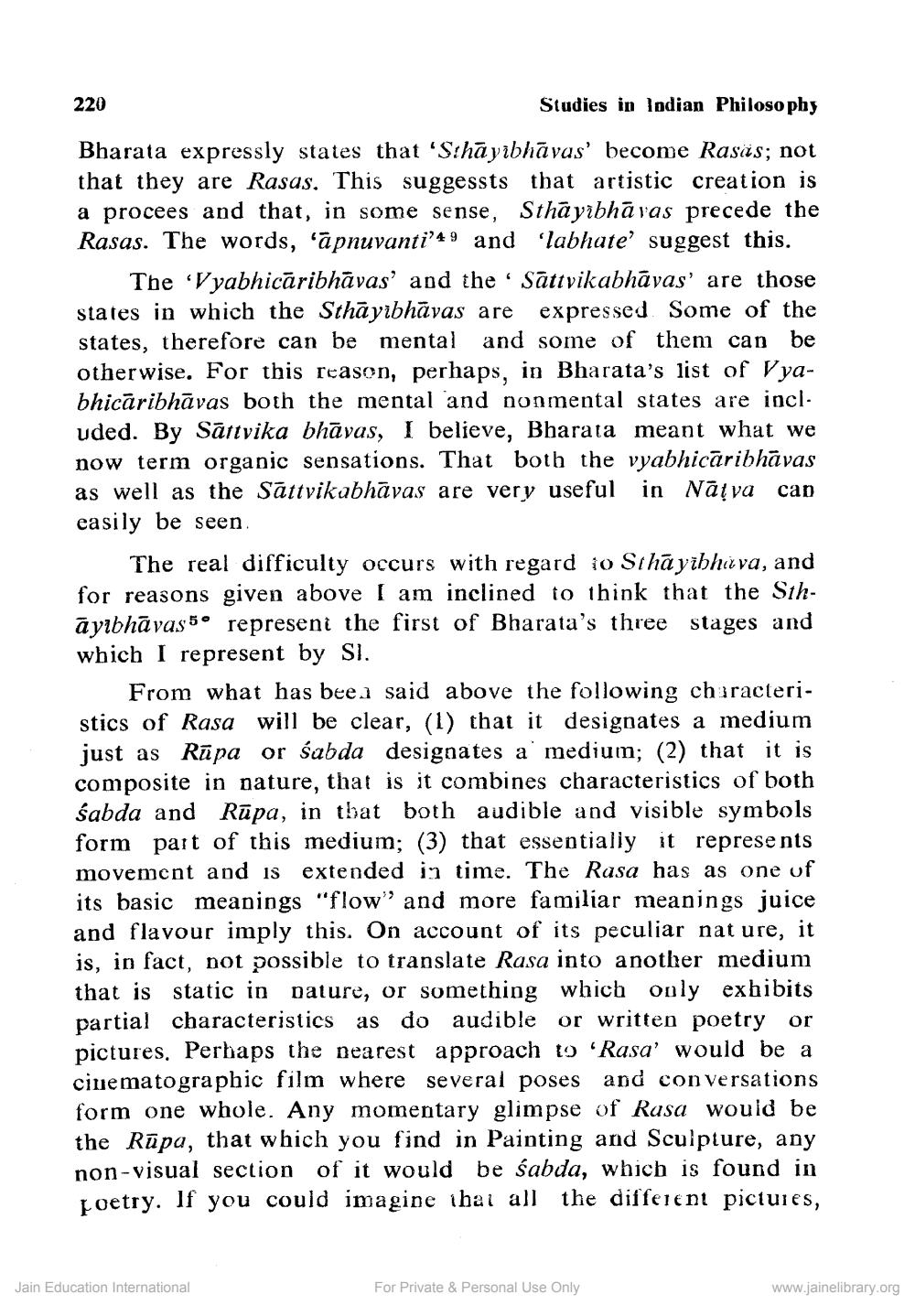________________
Studies in Indian Philosophy
Bharata expressly states that 'Sthāyibhāvas' become Rasas; not that they are Rasas. This suggessts that artistic creation is a procees and that, in some sense, Sthayibhavas precede the Rasas. The words, 'apnuvanti' and 'labhate' suggest this. The 'Vyabhicaribhāvas' and the Sattvikabhavas' are those states in which the Sthayibhāvas are expressed Some of the states, therefore can be mental and some of them can be otherwise. For this reason, perhaps, in Bharata's list of Vyabhicaribhavas both the mental and nonmental states are incl. uded. By Sattvika bhāvas, I believe, Bharata meant what we now term organic sensations. That both the vyabhicāribhāvas as well as the Sattvikabhavas are very useful in Natya can easily be seen.
220
The real difficulty occurs with regard to Sthayibhava, and for reasons given above I am inclined to think that the Sthayıbhāvas 5 represent the first of Bharata's three stages and which I represent by Sl.
From what has been said above the following characteristics of Rasa will be clear, (1) that it designates a medium just as Rūpa or sabda designates a medium; (2) that it is composite in nature, that is it combines characteristics of both sabda and Rūpa, in that both audible and visible symbols form part of this medium; (3) that essentially it represents movement and is extended in time. The Rasa has as one of its basic meanings "flow" and more familiar meanings juice and flavour imply this. On account of its peculiar nat ure, it is, in fact, not possible to translate Rasa into another medium that is static in nature, or something which only exhibits partial characteristics as do audible or written poetry or pictures. Perhaps the nearest approach to 'Rasa' would be a cinematographic film where several poses and conversations form one whole. Any momentary glimpse of Rasa would be the Rūpa, that which you find in Painting and Sculpture, any non-visual section of it would be sabda, which is found in poetry. If you could imagine that all the different pictures,
Jain Education International
For Private & Personal Use Only
www.jainelibrary.org




